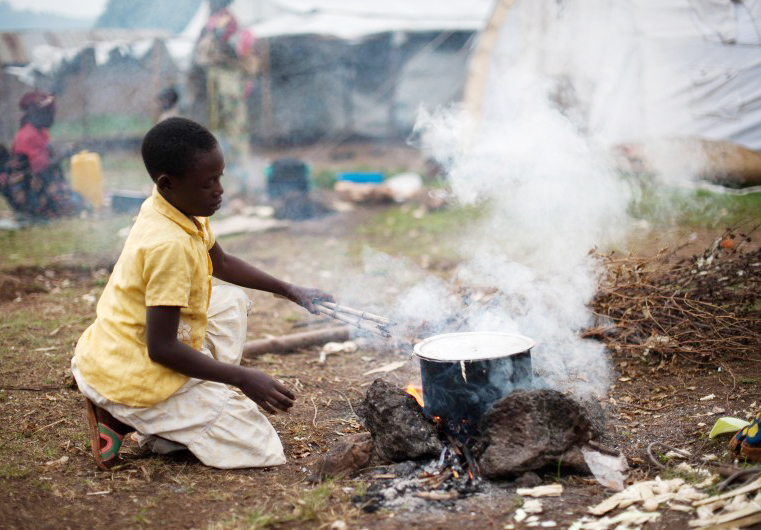Kitchen smoke: signs of poisoning
- Posted on 17/05/2023 17:44
- Film
- By abelozih@sante-education.tg

Extract from the article: Exposure to fuels can have harmful consequences for your health. How can you tell if you are being poisoned by cooking fumes? Dr Laurent Zagré, a pulmonary specialist at the CHR of Ziniaré in Burkina Faso, shows the signs.
Exposure to fuels can have
harmful consequences for your health. How can you tell if you are being
poisoned by cooking fumes? Dr Laurent Zagré, a pulmonary specialist at the CHR
of Ziniaré in Burkina Faso, shows the signs.
Burning wood produces emissions of
different chemical compounds. There is: particulate matter (PM): « These
are fine particles of pollutants that stick to tiny pieces of ash and carbon.
These particles are so small that they penetrate deep into the lungs and cause
lung and heart problems. PM causes health problems, including irritation of the
airways, reduced lung function, worsening asthma, chronic bronchitis and
premature death in heart patients », says Dr Laurent Zagré, a
Burkinabe pulmonologist at the CHR in Ziniaré.
« Carbon monoxide (CO)
can be found. This colourless and odourless gas reduces the blood's capacity to
transport oxygen. It is extremely toxic and, in high concentrations, can cause
death. These fumes also contain irritants such as acrolein, which causes
inflammation and allergic reactions. Polycyclic aromatic hydrocarbons (PAHs),
carcinogens, are also found in cigarette smoke and chimney soot »,
says pulmonologist Dr Laurent Zagré.
Wood burning also produces volatile
organic compounds, including benzene. These compounds cause cancer, followed by
dioxin emissions, which are extremely carcinogenic.
Health consequences
The health consequences include
"liver problems, immune, reproductive and endocrine system disorders,
developmental and neurological problems in children, certain types of cancer,
chronic obstructive pulmonary disease (COPD), and asthma exacerbation",
identifies the pulmonologist.
Recognising the signs of
intoxication
According to Dr Laurent Zagré, « when
we have respiratory or ocular signs of exposure to cooking smoke, we should
always consult a doctor in order to better investigate and make a diagnosis ».
Advice for the population
For cooking smoke, « use only
very dry wood, which burns better, produces more heat and emits less smoke and
pollutants. Use small pieces of wood and make sure there is adequate
ventilation. Never burn treated wood (such as pieces of furniture, doors or
windows that may have been treated for termites or other pests), wood covered
with plastic, glue or paint, or wood from utility poles or railway sleepers.
These types of wood are impregnated with a variety of substances that release
large amounts of toxic products, including dioxins, when burned, » advises
the specialist.
Never burn rubbish, plastic or tyres. « These
materials contain toxic substances, so burning them indoors is even more
dangerous, since intense concentrations of pollutants are produced. The danger
is particularly serious for women and children who are directly exposed for
long periods of time », explains Dr Laurent Zagré.
Do not use petrol, paraffin, oil or
coal to light a fire indoors. « It is better to use paper, leaves or
small branches impregnated with natural resin. If you have a fireplace or a
wood-burning stove, make sure that the ventilation ducts are clean; this
promotes less polluting combustion », recommends the pneumologist.
Elom AKAKPO




